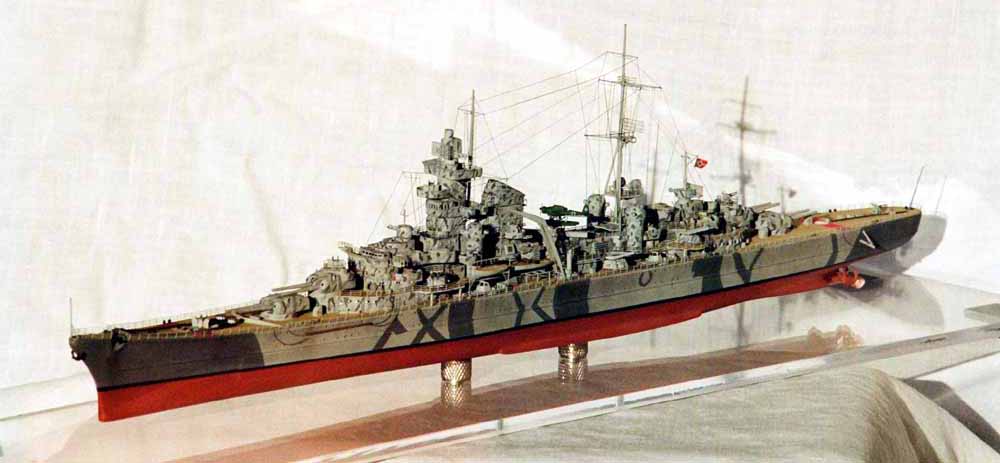by George A Georgopoulos

1/600 DKM Prinz Eugen (Airfix)

After a year and a half of keeping me company on the workbench, the Prince is off to the display cabinet and I am off to my next build. Enjoyable as it was, the time was ripe.
The model. I've been building ship models for a long time, so I cannot help but be fond of the old Airfix kits. Though the casts are from 1975, the detail and the fit are way ahead of their time. It is probably among the best Airfix ship models. I also fancy the more "curvy" lines of the hull shape compared to the Tamiya 1/700 kit.
Objectively, and to be fair, inaccuracies do exist and the small parts are quite roughly casted. Most of these are nothing that cannot be corrected. For some however, like the different relative scales among the various weapons' gun barrels the only thing that can be done is to replace them. You could say then that the kit provides a good base for scratch building.
For some inexplicable reason the kit comes essentially devoid of boats, featuring only the two whalers. To my rescue came Anthony P., a fellow Modelwarships.com modeller, who went beyond the call of duty, dug into his collection and provided the rest of the boats you see on the model. I remain indebted.
Camouflage. The ship is depicted with the scheme it wore on its way north to Norway, in Feb. 1942 after the Channel dash. At the end of that trip, the Prince was torpedoed and lost its stern. The hull camouflage is close to the pictorial evidence.
The camo on the superstructure is another matter. It is supposed to be a random splotch pattern but I found no definitive pictures for it--they are all fuzzy. However, I noted that fellow modelers who went this road before me wished that their pattern was more fine grained, so this is what I attempted. Two shades of gray on yet a third grey background, treated with a filter to blend the colors are what you see on the model.
Scratch building/Techniques. Though I started out with the intention to scratch build just an open airplane hangar, I somehow ended up doing a lot more work on the model. Scratch built items and the techniques used are outlined in the following build report
Various WEM PE sets were used;
All of them were great. If I only had one wish, I would ask for more vertical ladders on the 627 set. The length provided is not enough if one wishes to add ladders to the masts.
References. The Warship Pictorial #21: Prinz Eugen provided such a complete set of pictures that there was little need to refer to much else. Excellent value there. Iíll raise just one minor flag: The birdís eye view diagram in the cetnerfold is actually a mirror image≠as if you are looking at the original through a mirror. Comparing the diagram to the pics in the area of overlaid planking under the anchor chains on the bow reveals the error. One thing I learned is to trust pictures more than diagrams.
Conclusion. Thoroughly enjoyable build; learned a lot from it; made new friends. But it was a long build and near the end, I found myself cutting corners, aching to move on.
Once again, Modelwarships folk contributed both eponymously and unknowingly to
my effort. There is a lot of wisdom shared on this site; and I find myself on the receiving end more often than not.
Happy modeling!
